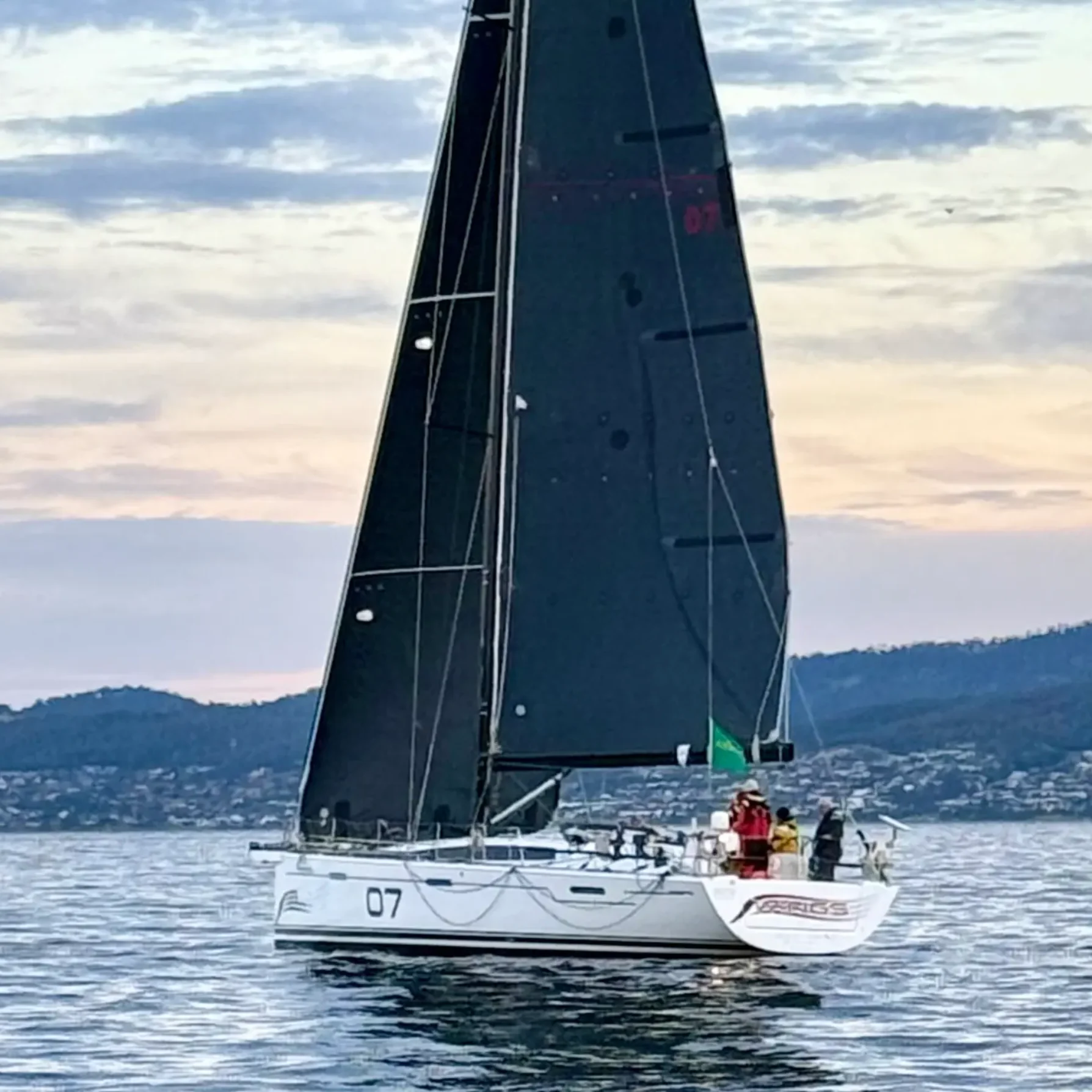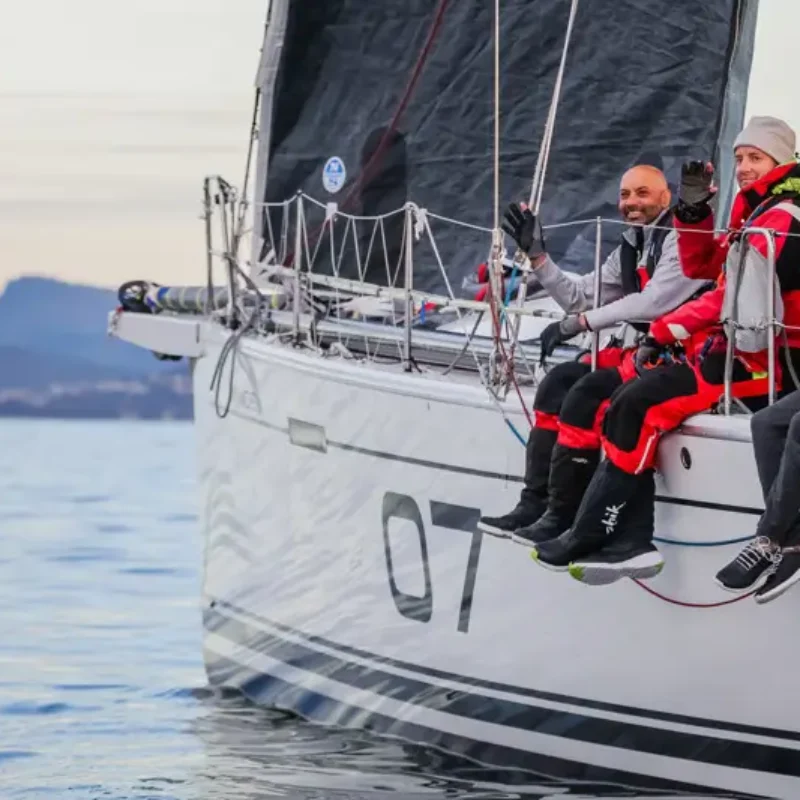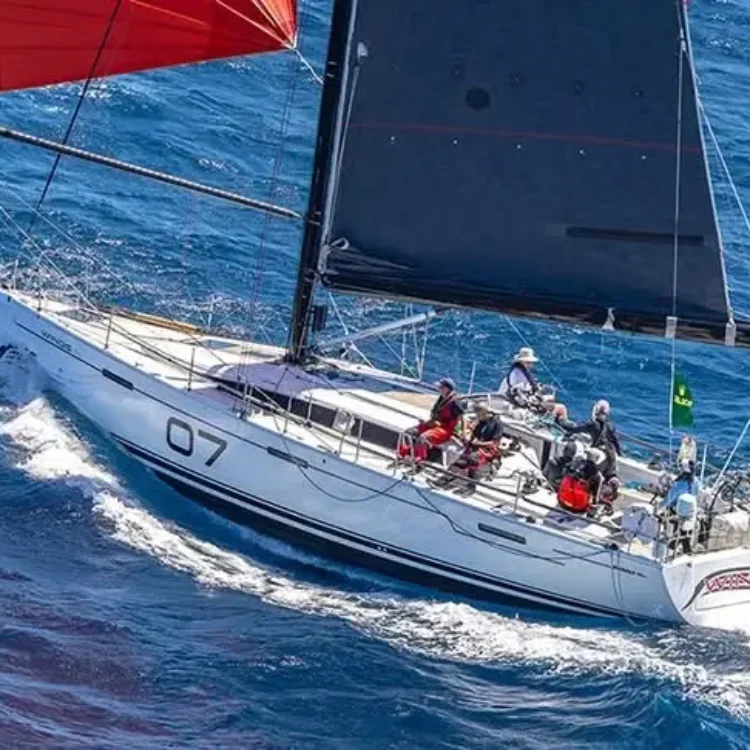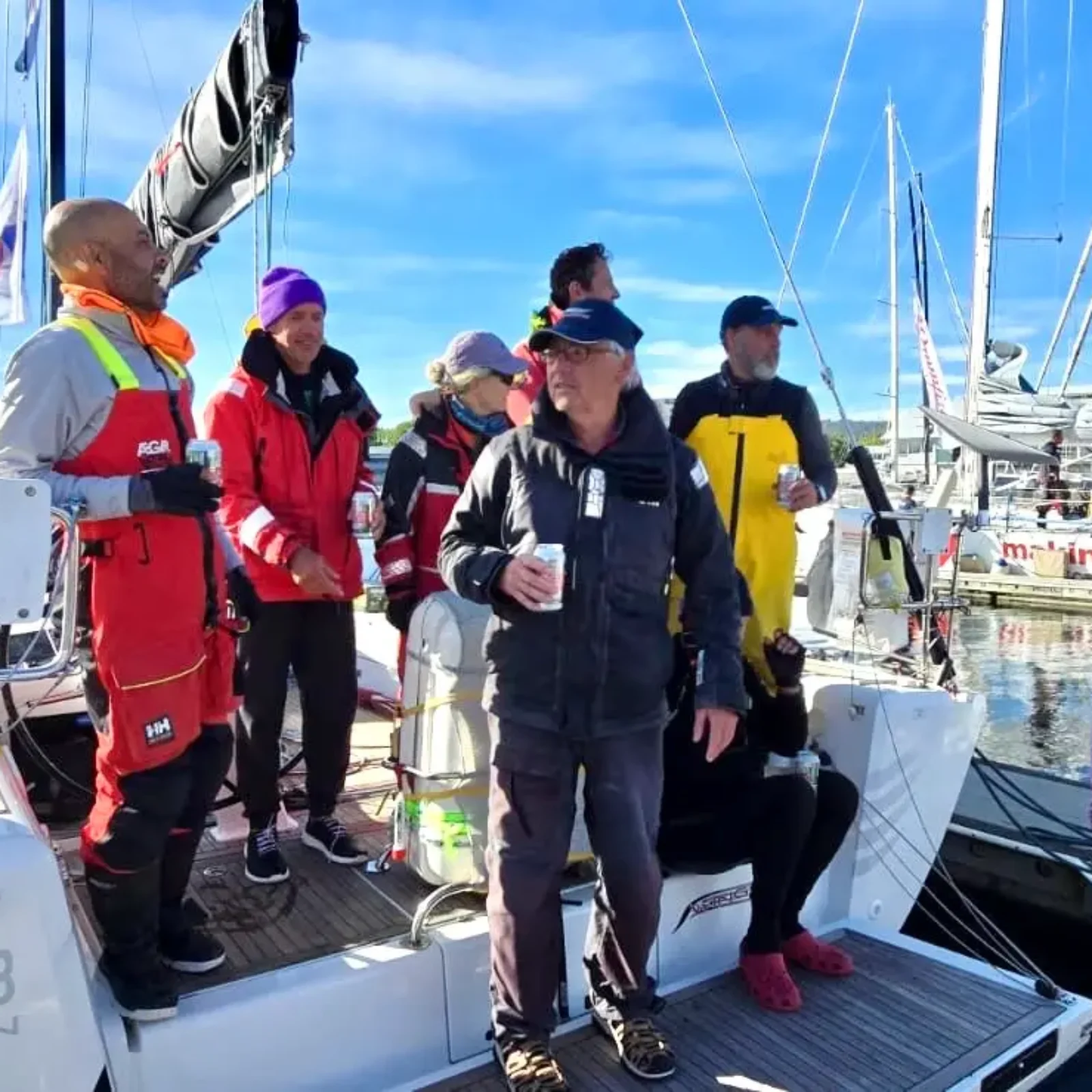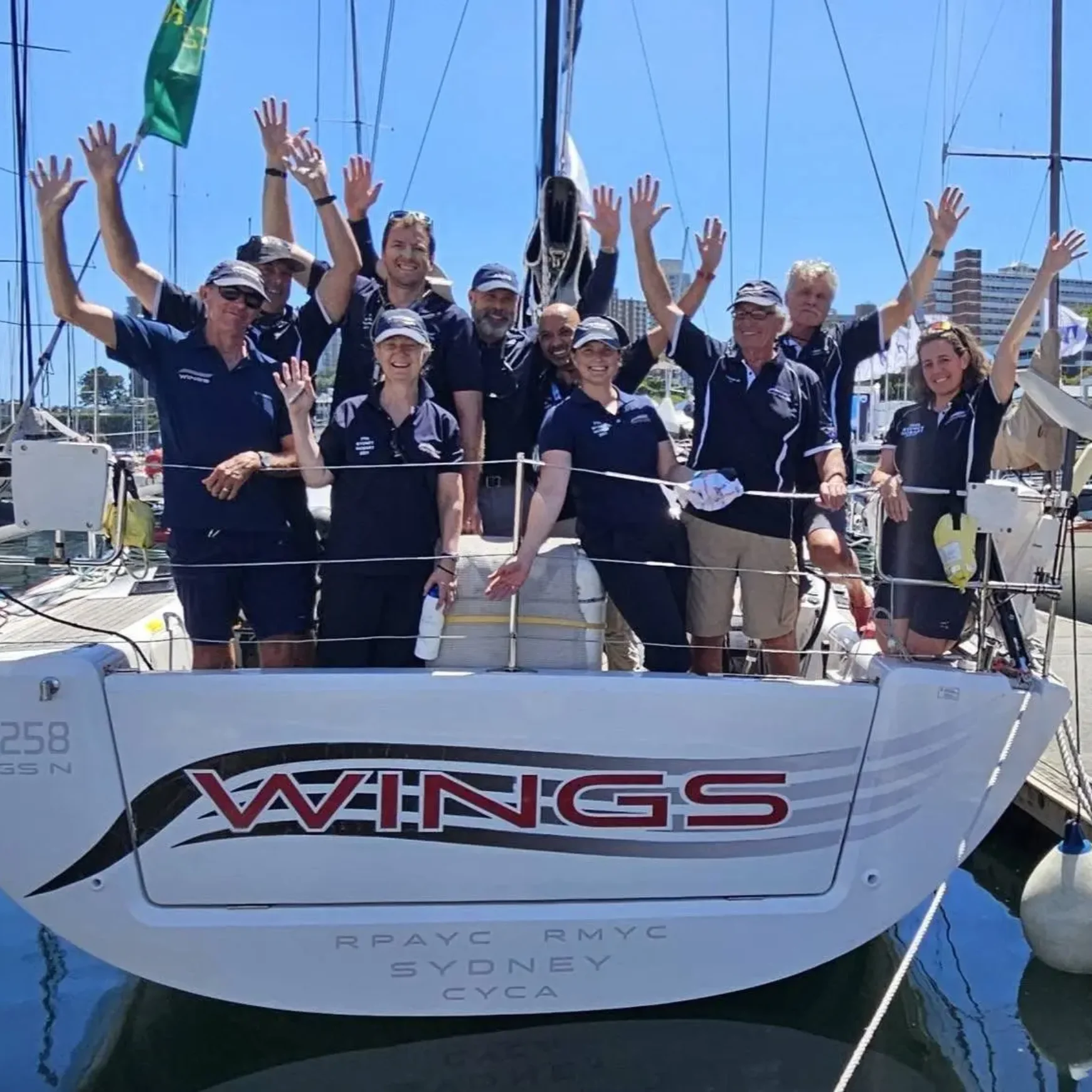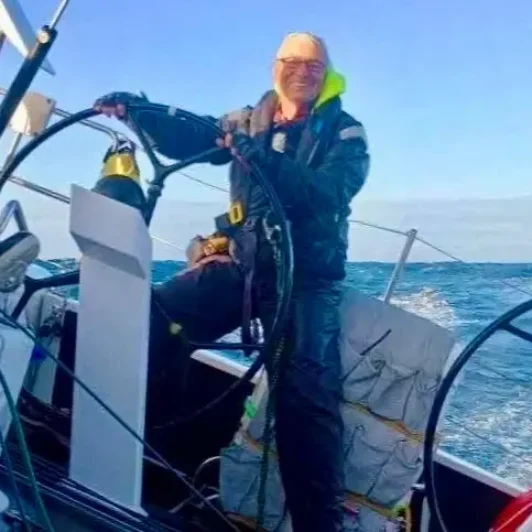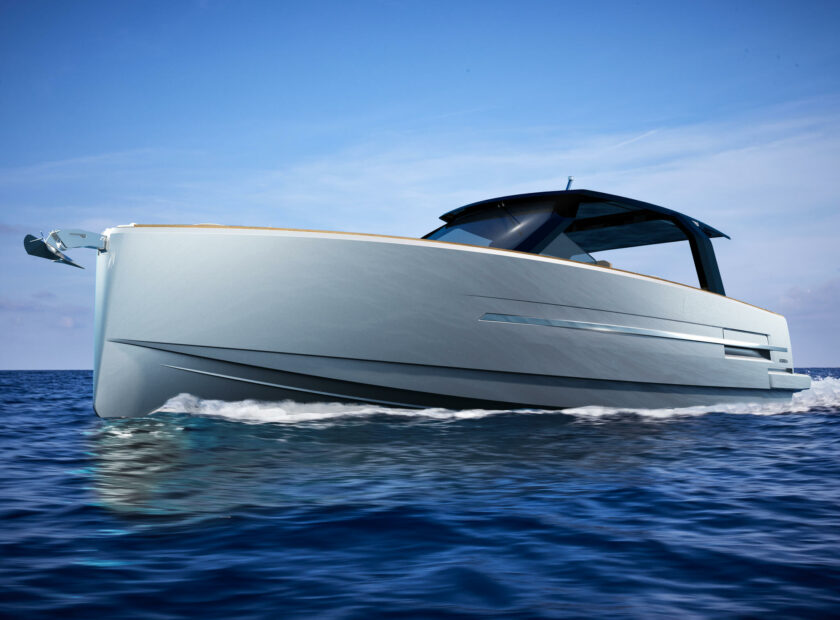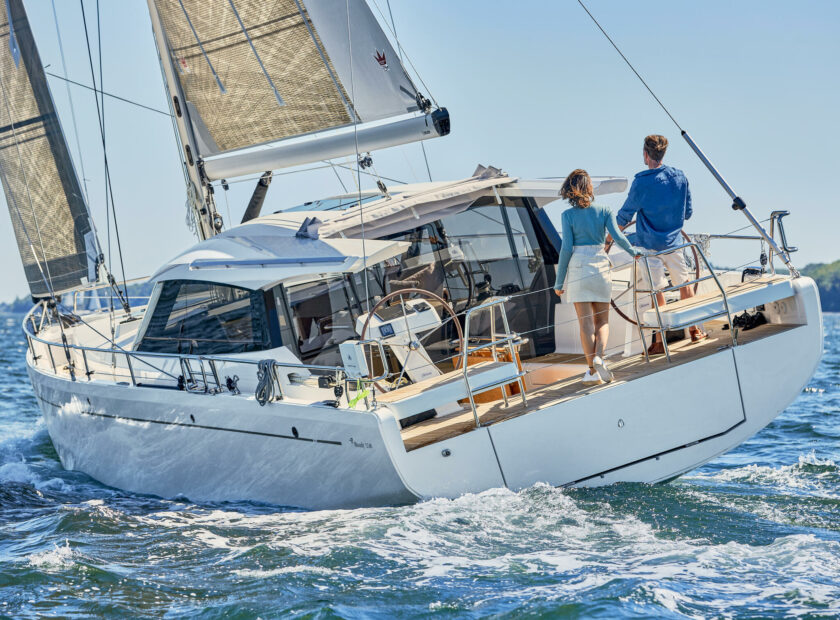“Punishing. Arduous. Relentless”.
The 2024 edition of the Rolex Sydney Hobart lived-up to its reputation as one of toughest tests of sailor and yacht.
Ian Edwards and his dedicated crew aboard Wings, a Dehler 46, was one of 52 finishers. Almost a third of the fleet, 22 boats, retired after gale force northerlies on the first night took a heavy toll with dis-mastings, man overboard incidents and tragically two lives lost.
The Wings crew guided the performance cruiser safely to Hobart in 3 days, 17 hours and 7 mins, placing 27th over the line and in the top half of IRC Division 2.
Ian takes us through the race:
December 26 – Boxing Day
It was a nice start. We expected the conditions offshore to be needing a reef, so we started with a reef. I did have second thoughts and it probably cost us a minute or so going out.
Once we rounded the sea mark, we put the S4 spinnaker up. I quite like having a reef in, as in heavy conditions the main isn’t as valuable to you as the spinnaker. If you do start to round-up if you have a full main you get rotational forces. We changed to the fractional S5 (spinnaker) and as the wind built we blew it out, nothing dramatic, then we poled-out the J4 with two reefs in and we were rocking along but even that was starting to get unstable. So about 15 minutes before the Mayday (from Flying Fish Arctos) we took the pole down and gybed, so were already in a mode to keep the boat in a controlled, safe condition.
I’d actually gone down (stairs) when the call came through just before midnight. I knew we were going to be close to them and on the plotter we were 2 nautical miles away, going straight at them at over 10 knots. When Arctos said they had an unconscious crew member I immediately got on the radio and offered our defibrillator. [Wings is one of only a few boats in the fleet to carry a lightweight (1.1kg), durable defibrillator that can be used in the event of a cardiac arrest].
I felt obliged to offer it, they said yes they’d like it, so we went into response mode. We took pulled down our jib, not an easy task downwind so it doesn’t wash overboard. We turned upwind with the motor and dropped the main in 40 plus knots, in big seas, in the dark.
We put the defibrillator in a dry bag and worked out how we would get it to them. The strategy was to get them to point just off head-to-wind and we would come to within two boat lengths above them and throw the defibrillator with a line attached. It would drift down to them and they could use a boathook to retrieve it.
But before we could attempt that Arctos advised they didn’t require it anymore. Sadly, I think we knew what that meant. We felt did everything we could and were glad we tried. So, we went back into race mode, however we could only get the main up, and decided we couldn’t get the genoa up without wrapping it around the forestay. By about 530 or 6am the wind had eased a bit and we put it up.
December 28 & 29
We were off Green Cape around 9am. Earlier we could see lighting further inshore of our position. It was a pretty quick transition from the northerly to southerly. We had anticipated it and I had wanted to be far enough offshore so when it hit us we could clear Gabo Island. But as it turned out we weren’t quite far enough out because we on the coast at Green Cape and had to do a couple of tacks.
As we went across the (Bass) Strait we expected the wind to shift to the south-west, and we were quite east to take advantage of that. All the models said come in close to the coast; one for current assist and two for the predicted wind swing. As it turned out we benefitted from that.
I really enjoy the strategy involved in long offshore sailing. You are working out how to sail fast and manage the boat not just in this hour’s wind but the wind in six or 12 hours’ time. You want the maximum amount of sail up but you have to pick your mode changes well.
Coming out of the Strait the boats that were a long way offshore were punished and it paid to be as inshore as possible, and we came in quite close to Maria Island.
We rounded Tasman Island around sunset but then parked-up at the entrance to the Derwent.
December 30 – final day
The last stretch turned-out into a marathon light-air duel in the river with XS Moment and Mako. In a tight finish we just managed to squeak past them in the little bit of breeze that had filled in. That’s the worst (Derwent River) shut-down we’ve experienced on Wings. This time it took us around eight hours (to cover 12 nautical miles) from the time we arrived at the Iron Pot.
It never feels good when you’re parked-up and you can see boats with breeze closing the gap on you and there’s nothing you can do about it.
It’s sometimes said the race should finish at Tasman Island, and I have to say I was thinking that a few times while we floated in the river.
We were happy with our result but that last section hurt us a lot.
In terms of the race itself, in the 2021 race we belted into 20-25 knots all the way to Bass Strait and there were lots of retirements that year too. The wind was stronger this time but in 2021 it was on the nose. That’s just hard work, bashing into it.
In the Hobart race because of its nature, you will get a wide range of conditions. A race like that when you’ve dealt with all the things along the way and cross the finish line there’s definitely a big sense of accomplishment. We blew-up the S5, assisted with a mayday, got back in the race, then ended-up just getting ahead in the light airs at the finish. It’s like climbing a mountain, you’ve achieved it and overcome a lot on the way. You love the boat, you love each other and you’ve got to the finish line safely.
Fortunately, the boat is strong, I’m happy with my Dehler 46, and I have a very good team. People who can sail in tough conditions but also maintain their motivation and can cope with the social aspects of being on a boat with ten people for days at a time.
* Wings was granted a Redress of 90 minutes by the International Jury for giving help to Flying Fish Arctos in accordance with RRS Fundamental Rule 1.1.



